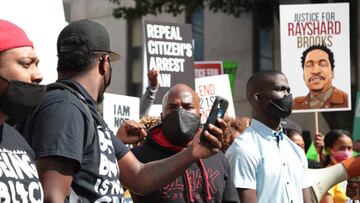How much has unemployment gap widened between black and white people?
The unemployment rate for black men rose in June to 16.3% amid the coronavirus pandemic in the United States, the highest level since 2011.

The death of George Floyd at the hands of a law enforcer in Minneapolis sparked thousands of protests all over the world including all 50 states in the U.S. The recent wave of ‘Black Lives Matter’ is also serving to see the economic inequality between white and black Americans throughout many generations.
Unemployment among black people in US sees smaller drop
The gap between the United States unemployment rates for black and white people broadened in June amid the coronavirus pandemic. Jobless rates for both races fell in June, but the rate for white people fell 2.3% points to 10.1% from 2.4%, while the rate for black people dropped 1.4 points to 15.4% from 16.8%.
The unemployment gap in June is the largest in the past five years and the Covid-19 outbreak brought an abrupt end to the record-long US economic expansion just as it was creating better job opportunities for black workers and other minorities, and the job losses fell hardest on women and workers of color.
The service industry has been drastically affected by the coronavirus pandemic and the overall drop in the unemployment rate for African Americans in June was driven by the number of women returning to work in bars, restaurants and retail stores. In California and Florida, there has been a spike in new coronavirus cases and governors have shut down the service industry again.
Related stories
The unemployment rate for black men rose in June to 16.3%, the highest level since 2011, from 15.5% in May. In contrast, the unemployment rate for black women dropped to 14% from 16.5% in May.
Black unemployment higher than other minority-ethnic groups
Black workers now have the highest unemployment rate when compared with other racial or ethnic groups after the unemployment rate for Hispanic workers dropped to 14.5% in June from 17.6% in May. The unemployment rate for Asian workers dropped to 13.8% from 15%.

